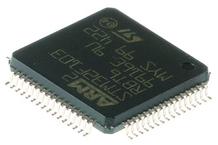INTRODUCTION
●The ST72321R, ST72321AR and ST72321J devices are members of the ST7 microcontroller family designed for mid-range applications All devices are based on a common industry standard 8-bit core, featuring an enhanced instruction set and are available with FLASH or ROM program memory.
●Under software control, all devices can be placed in WAIT, SLOW, ACTIVE-HALT or HALT mode, reducing power consumption when the application is in idle or stand-by state.
●■ Memories
● – 32K to 60K dual voltage High Density Flash (HDFlash) or ROM with read-out protection capability.
● In-Application Programming and In-Circuit Programming for HDFlash devices
● – 1K to 2K RAM
● – HDFlash endurance: 100 cycles, data retention: 20 years at 55°C
●■ Clock, Reset And Supply Management
● – Enhanced low voltage supervisor (LVD) for main supply and auxiliary voltage detector (AVD) with interrupt capability
● – Clock sources: crystal/ceramic resonator os cillators, internal RC oscillator, clock security system and bypass for external clock
● – PLL for 2x frequency multiplication
● – Four Power Saving Modes: Halt, Active-Halt, Wait and Slow
●■ Interrupt Management
● – Nested interrupt controller
● – 14 interrupt vectors plus TRAP and RESET
● – Top Level Interrupt (TLI) pin on 64-pin devices
● – 15 external interrupt lines (on 4 vectors)
●■ Up to 48 I/O Ports
● – 48/32 multifunctional bidirectional I/O lines
● – 34/22 alternate function lines
● – 16/12 high sink outputs
●■ 5 Timers
● – Main Clock Controller with: Real time base, Beep and Clock-out capabilities
● – Configurable watchdog timer
● – Two 16-bit timers with: 2 input captures, 2 output compares, external clock input on one timer, PWM and pulse generator modes
● – 8-bit PWM Auto-reload timer with: 2 input captures, 4 PWM outputs, output compare and time base interrupt, external clock with event detector
●■ 3 Communications Interfaces
● – SPI synchronous serial interface
● – SCI asynchronous serial interface (LIN compatible)
● – I2C multimaster interface
●■ 1 Analog peripheral
● – 10-bit ADC with up to 16 input pins
●■ Instruction Set
● – 8-bit Data Manipulation
● – 63 Basic Instructions
● – 17 main Addressing Modes
● – 8 x 8 Unsigned Multiply Instruction
●■ Development Tools
● – Full hardware/software development package
● – In-Circuit Testing capability


